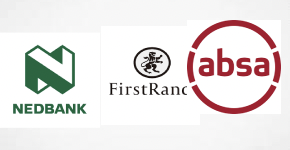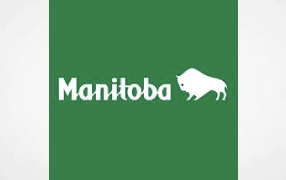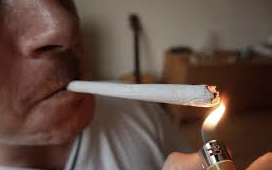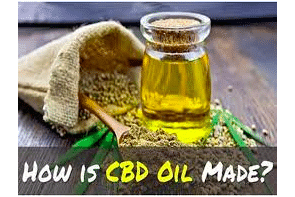CBD oil is a by-product of the hemp and cannabis plants. The compound is not addictive and does not cause hyperactivity because it contains low traces of THC. THC is the chemical compound in cannabis that causes hyperactivity and addiction.
CBD oil is extracted from the flowers and buds of the cannabis and hemp plants and processed into many forms. For example, people use the oil as tinctures, edibles like gummies and dried fruits, and capsules.
When you buy CBD Oil Ottawa, you can use it to treat various health problems since it has many health benefits to the body, a reason most people widely use it. For example, it relieves chronic pain, and the product is common for arthritis and cancer patients.
CBD oil also controls seizures in epilepsy patients. Other uses are to reduce stress and kill insomnia, and it also acts as an antidepressant.
Now, let’s find out what makes up CBD.
How CBD Is Made for Human Consumption
The first step to making CBD is planting the cannabis or hemp plant. The seeds are sowed into the ground, close to each other. That is an advantage because closeness means excellent yields and reasonable utilization of the land.
The hemp plant takes around 60 days to be ready for harvest. One of this plant’s advantages is that it produces high amounts of biomass and can grow in many regions.
Once the plant is ready, the farmer harvests the flowers of the hemp. Before harvest, several tests are done on the plant to ensure the THC levels are at 0.3 percent, and no heavy metals or pesticides affected the crop.
The harvested plants are then air-dried in a ventilated room for about 3-4 weeks. The flowers carry the most cannabinoids, and they are stripped and transported to the factory, where different methods are used to extract CBD oil.
Methods of CBD Oil Extraction
Extraction is the process of removing CBD from hemp plants and turning it into a usable form that the body can ingest. These forms can be CBD oil, tinctures, topical applications, and edible CBD products like gummies and dried fruits.
Let’s now turn our attention to CBD oil extraction.
a) Carbon dioxide Extraction
CBD oil extraction using carbon dioxide takes advantage of the change in CO2 into a gas, liquid, and solid. The process begins with turning CO2 into solid. The manufacturer then pumps the cannabis material into the next chamber, where carbon dioxide is liquid.
CO2 interacts with cannabis and absorbs all the oils and flavors from it. The liquid substance then goes into a third chamber, where it changes into a gas. Finally, it evaporates, leaving the oils and flavors behind.
This method produces very pure CBD. However, most manufacturers cannot afford it because those chambers and other equipment are very costly. Sometimes mistakes happen during production, like doing the extraction in less than optimal conditions.
b) Ethanol Extraction
Ethanol is an effective, safe and simple way of extracting CBD oil from hemp or cannabis plant. Manufacturers use high-grade grain alcohol to carry on the process. The method takes a short time for this process to be complete.
You can do the process under warm or cold conditions. CBD oil created from ethanol extraction is also pure, and the oils are mainly used for vape pen cartridges.
One disadvantage of ethanol extraction is that it destroys the cannabis plant waxes, with various health benefits.
c) Solvent Extraction
Besides carbon dioxide and ethanol, natural liquids like butane and hexane are suitable for extraction. The liquid solvent is run through the hemp or cannabis products to absorb essential oils, cannabinoids, and terpenes.
This method is cheap and can give a lot of CBD, hence used for commercial production. However, unlike carbon dioxide and ethanol methods of extraction, this one has more downsides. First, the oil solvents are very flammable, which can cause significant damage in case of fire.
The method does not produce the purest CBD products because all the solvent does not evaporate. Also, some of the impurities remain behind. The plant’s chlorophyll is also not completely removed, leaving a green coloration and a bitter taste in the oil.
After the primary extraction, the manufacturers go in with a secondary extraction to purify the product. Some of them are;
d) Winterization
Winterization is a secondary extraction method that helps to remove all the undesirable substances from the CBD to get a pure oil. This happens through combining the impure oil with alcohol and stirring vigorously.
The desirable ingredients dissolve into alcohol, and the impurities form a residue that is filtered. The solvent of alcohol and essential oils mixture is then frozen and passed through paper filters. The filter absorbs any unwanted part. The frozen product remaining is pure CBD oil.
The last step is to boil the frozen ball to the alcohol’s boiling point. Alcohol evaporates, leaving pure CBD oil.
Final Stages of Making CBD Oil
The CBD from the extraction is not the final product. Once all the extraction processes are over, pure CBD oil combines with flavoring and carrier oil ingredients. Some of the oils used are coconut and hemp seed oil.
Coconut oil has a lot of saturated fats and makes a suitable carrier for full-spectrum CBD. The body readily absorbs this type of CBD, and it is likely to get most of the product’s nutrients. Manufacturers also add flavors to the oil to make it easy for consumption and swallowing.
The last stage is lab testing and packaging. Finally, the manufacturer takes a sample from the final extracted product to test for purity and potency.
When buying, consider CBD oils tested by a third-party lab. That is because they don’t approve of impure CBD products or those of poor quality.
The lab then labels the constituents in the CBD oil, and it is ready to sell. There is no standard dosage of CBD, so consult your doctor before taking it.
Final Words
There are several methods of CBD oil extraction. As manufacturers choose the most effective method, they also consider factors like costs. Like for example, the carbon dioxide method is not standard because of the costly tools.

















